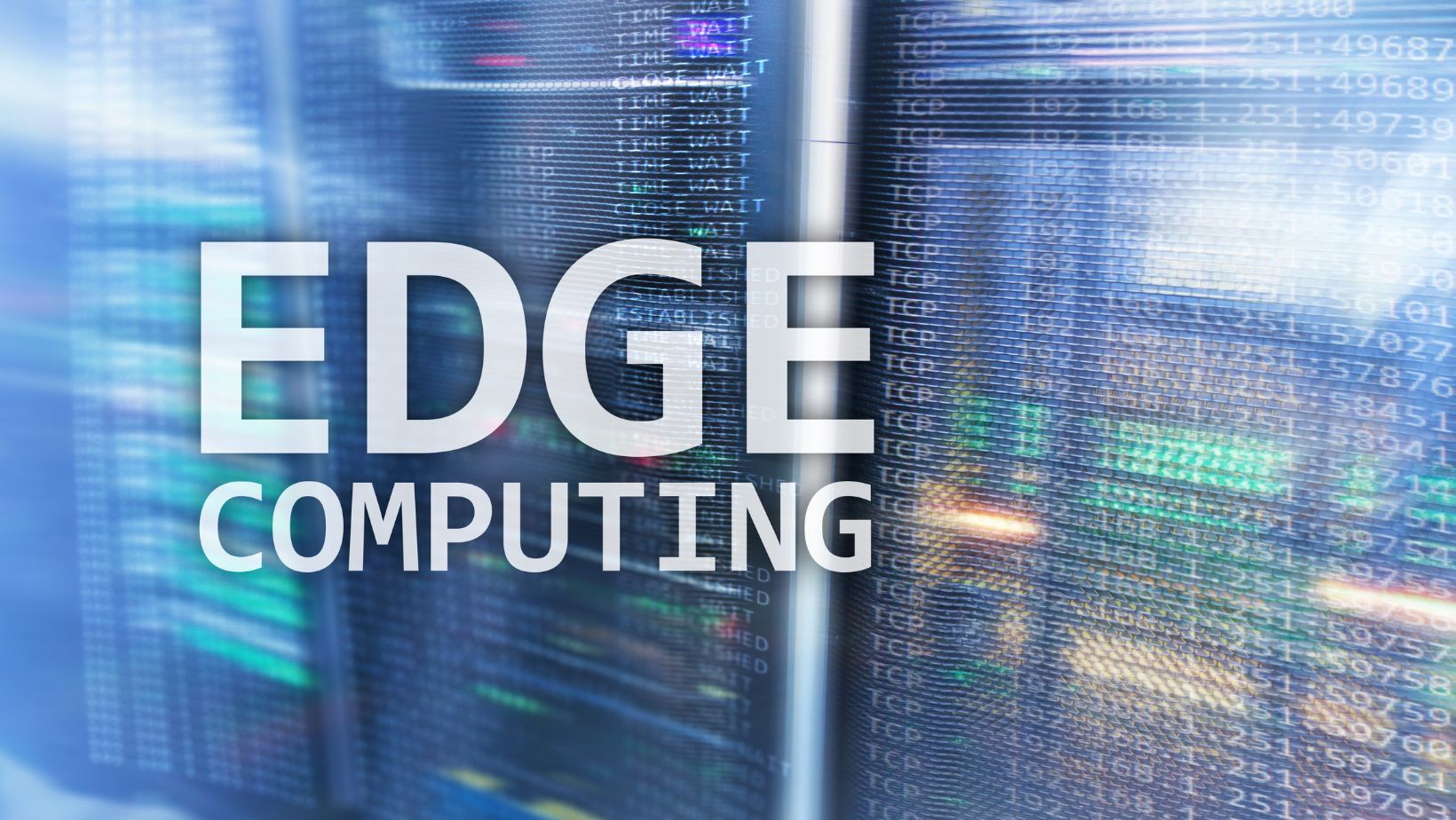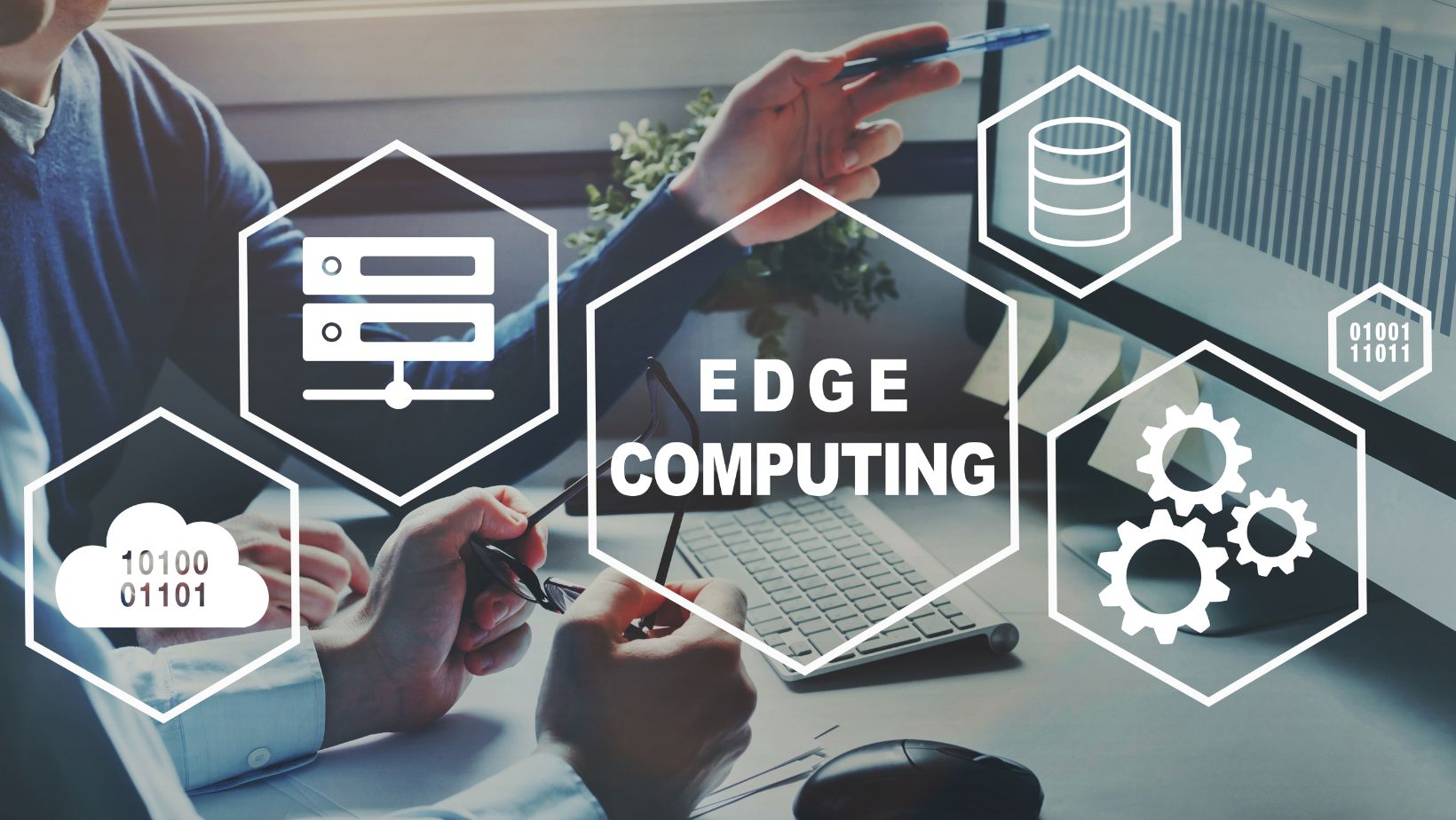In the world of technology, edge computing is rapidly gaining traction. It’s a revolutionary concept that’s set to redefine how data is handled, processed, and delivered from millions of devices worldwide. But what exactly is edge computing, and why is it becoming such a hot topic in the tech industry?
This article will dive into the intricate world of edge computing, shedding light on its fundamental principles, its potential impact, and why it’s being hailed as the next big thing in technology. Whether you’re a tech enthusiast eager to stay ahead of the curve or a professional looking to leverage the latest trends, this piece will provide a clear, concise, and engaging look at edge computing.
Understanding Edge Computing

Edge computing can be defined as the distribution of data processing through a range of devices or local computing resources, often referred to as edge devices. Typically, these devices include routers, sensor-enabled equipment, and datacenter servers. This decentralized approach helps optimize cloud computing systems, a commendable feature in an era of intense data demands.
Edge computing operates on a key principle: lessening latency. By bringing computation closer to data sources, delays in data relay are reduced significantly. Essentially, it means edge computing enables data stream acceleration, which is integral to real-time applications such as autonomous cars and remote robotic surgeries, both dependent on instant data transfer and processing.
The Evolution of Edge Computing
Edge computing’s inception dates back to the early 2000s, it emerged during the advent of content delivery networks (CDNs). These networks aimed at reducing distance between users and servers, they tackled website load times, delivered localized content, and improved user experience.
Although CDNs offered localized delivery, they did not provide computation capabilities at the edge. Edge computing’s true potential began to unlock in the 2010s, coinciding with the explosion of Internet of Things (IoT) devices. IoT Devices are producing vast volumes of data and require low latency for processing. Edge computing offered a practical solution by processing data near the source and reducing strain on centralized networks.
By the mid-2010s, burgeoning technologies such as Artificial Intelligence (AI) and Machine Learning (ML) further propelled edge computing’s growth. These technologies rely heavily on data analysis, performed best with lower latency. Edge computing offered real-time analytics and faster response times, pivotal for tasks like anomaly detection in industrial IoT or autonomous driving.
Key Components of Edge Computing
Edge Computing doesn’t operate in isolation. It relies on specific elements to perform its data processing tasks with decreased latency and promote real-time applications and Internet of Things (IoT) management. Emerging from the need to adapt to innovative tech trends, edge computing aids in harnessing the power of processes like AR/VR, drones, and advanced AI/ML applications. Taking into consideration these varied applications, three main components underpin the efficient functionality of edge computing.
Edge Nodes: These are devices placed on the network’s periphery. Smartphones, sensors, and switches – akin to IoT devices – serve as Edge Nodes. These devices collect data locally and process it, quickly performing necessary actions based on the information.
Edge Network: Facilitating transfer of data from edge nodes to the network’s core components constitutes the role of an Edge Network. Often, this aspect of edge computing involves smaller, localized networks – for example, metropolitan area networks (MANs) – to ensure brisk data transfer and limit latency.
Edge Server: This solidifies the backbone of edge computing. In contrast to traditional servers, edge servers are positioned closer to data sources. That is to say, they’re near edge nodes. Thus, the popular saying stands affirmed: The beauty of edge computing lies in bringing computational power to the edge, closer to where data originates.
Edge Computing in Different Industries
Edge computing’s transformative power extends its influence beyond the tech industry. Its capabilities play an integral part in various fields, recalibrating systems and procedures to foster productivity, efficiency, and innovation. Examples of its application diversify across healthcare, manufacturing, telecommunications, and transportation.
In healthcare, edge computing aids clinicians in making accurate, real-time medical decisions. It fosters the analysis of complex health data from wearables, clinical devices, and electronic medical records without connectivity dependencies. It also enhances telemedicine by providing high-quality video conferencing, reducing latency during critical virtual consultations.
Comparing Edge Computing with Cloud Computing

Edge computing and cloud computing reign as principal architectures bolstering digital innovation. Despite being distinctive, they thrive by coexisting, each augmenting the benefits of the other.
On the edge computing front, it processes data near its source, cutting down latency significantly. Devices, for instance, smartphones or industrial machines, gain heightened efficiency in handling data. Contrarily, cloud computing uses centralized servers, usually off-premise, for data processing. It offers vast computational resources, ample storage, and flexibility of access. Yet, it grapples with data latency issues due to the distance between data sources and cloud servers.
Crucially, edge computing provides improved response times and saved bandwidth, encouraging the swift operation of real-time applications. An autonomous vehicle, leveraging Edge technology, can make immediate decisions, negating a collision. In cloud computing, the delayed response due to latency could be disastrous.
Case Studies on Edge Computing
For clarity in understanding Edge computing’s effectiveness, various real-life case studies exemplify its practical implementation.
- Autonomous Vehicles: These cars generate terabytes of data daily, which needs swift processing for real-time decision-making. In such a case, latency plays a significant role. Edge computing in autonomous vehicles cuts the latency, allowing faster reactions. An example is Tesla’s Autopilot system that analyzes data from on-board sensors promptly at the ‘edge,’ making real-time decisions for safe operation.
- Manufacturing Industry: GE Digital, a giant in the Industrial IoT (IIoT) sector, relies heavily on edge computing. They use edge computing to analyze data close to its sources like motors, turbines, and other industrial equipment, aiding in better predictive maintenance and operational efficiency.
- Healthcare: Philips’ eICU program demonstrates an effective usage of edge computing. It utilizes edge computing for enabling real-time patient monitoring, thus supporting healthcare practitioners in providing efficient responses to emergencies.
- Retail Industry: Walmart, a global megastore, applies edge computing to streamline its inventory management. By processing data locally in each store via edge devices, they’re able to reduce the bandwidth usage and reduce latency, making their inventory management system more efficient.
- Smart Cities: The city of Barcelona uses edge computing for their Urban Platform. Created to collect, analyze, and visualize data in real-time from sensors spread across the city, the platform supports a range of functioning from managing waste to predicting pollution levels.
These case studies underline the impact and contribution of edge computing in varied sectors, demonstrating it as a game-changer for managing and manipulating data in real-time.
Future Trends in Edge Computing
At the forefront of change, edge computing continues its transformative journey. As it scales up, it anchors novel trends, spotlighted in this segment.

The Expansion of 5G: Remarkable strides in technological advancements predict a wider 5G roll-out. Enhanced 5G networks, designed for higher speeds, massive capacity, and low latency, can support the increasing demand for real-time applications. The launch of the Internet of Things (IoT) devices, in particular, benefit immensely from this collaboration. Consider the implementation of IoT in healthcare. Connected devices like heart monitors or insulin pumps necessitate sleek, instantaneous data transport, essentially enabled by edge computing powered by 5G.
Rise of Artificial Intelligence (AI) and Machine Learning (ML) at the Edge: AI and ML find substantial usability in edge computing. These technologies demand exponential computing powers and suffer from latency issues during cloud computing usage. Hence, their transfer to edge infrastructure is inevitable. In industries like retail, camera-based systems utilizing AI provide immediate insights into customer behavior patterns, transforming marketing strategies. Similarly, in autonomous vehicles, the edge-based AI system ensures quick navigational decisions, providing safer driving conditions.
Growing Role of Cybersecurity: With the rise in data processing at the edge, ensuring data security will be paramount. Promoting robust cybersecurity protocols will help eliminate risks related to data privacy, addressing prominent concerns around edge deployments.
Increased Diversification of Micro Data Centers: Micro data centers are compact, self-contained solutions equipped with necessary storage, processing, and networking capabilities. They permit closer proximity to the data source, minimizing connectivity issues and reducing latency. Their essential role in delivering efficient edge computing capabilities predicts an upsurge.
Exponential Growth in Data Generation: The proliferation of IoT devices results in voluminous data generation. An acute need for data analysis at the source of data creation necessitates the deployment of edge computing capabilities. Thus, the surge in data production serves as a driving force fueling the expansion of edge computing.
Emerging trends indeed propel edge computing towards impactful horizons. Its crucial role in defining future digital landscapes is unquestionable, considering its potential to revolutionize real-time data processing and analysis.

